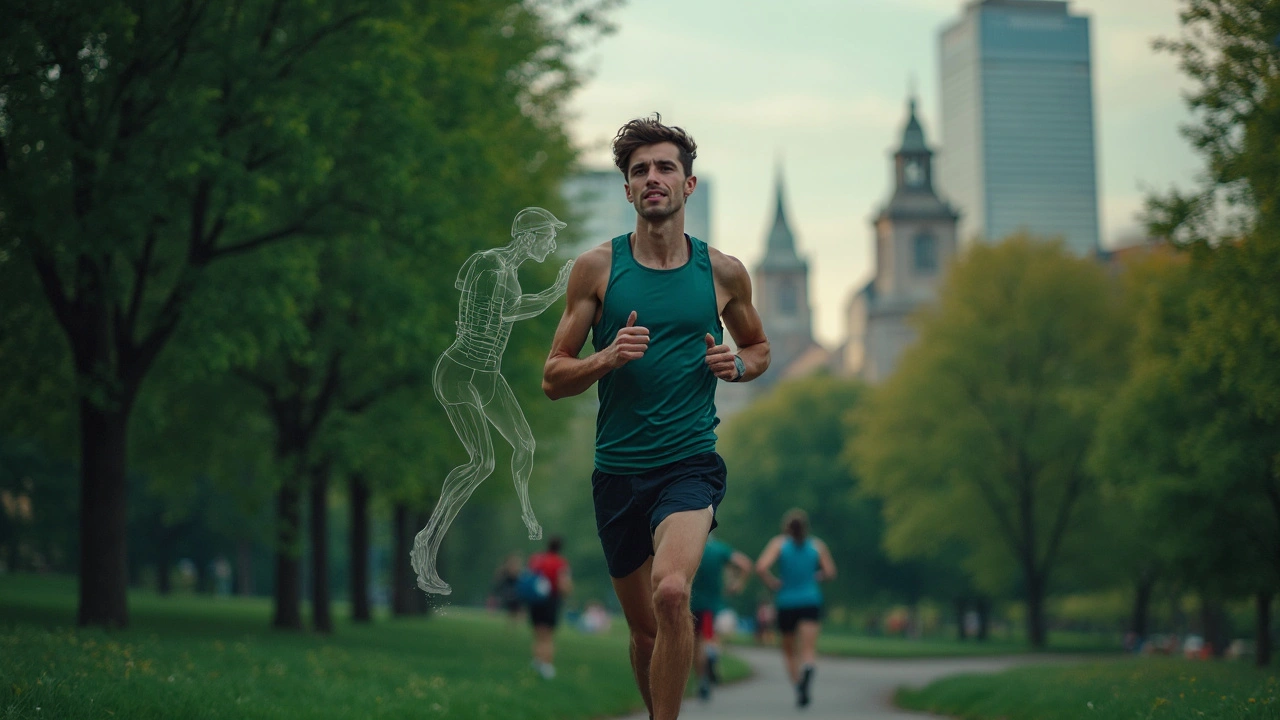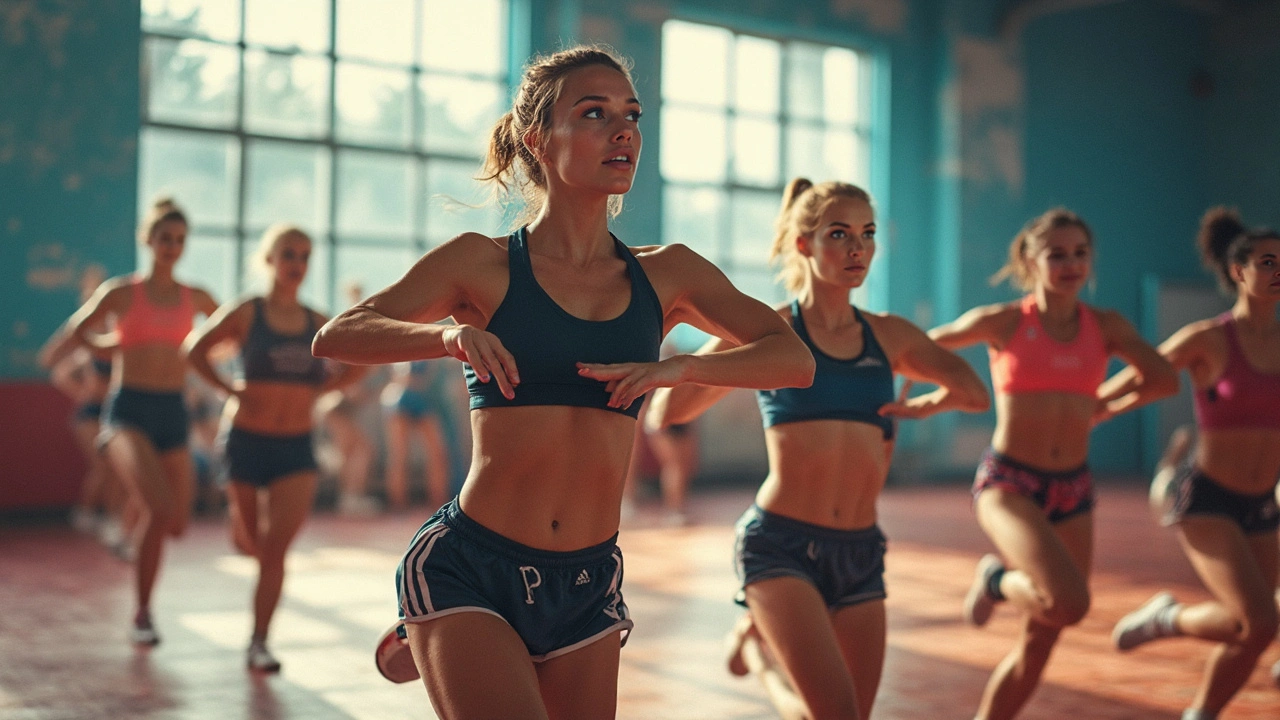Ever notice how top athletes seem to bounce back after grueling games? It’s not just good genetics or luck—sports massage is the secret weapon that keeps muscles loose, minds focused, and performance sharp. Even if you’re not hitting the gym six days a week, sports massage can help you play stronger and recover faster.
Muscles take a beating, whether you’re running, lifting, cycling, or just trying to keep up with your kids. Sports massage isn’t just for pros. If you deal with sore legs after a weekend run or tight shoulders from picking up groceries, this kind of targeted massage can make a world of difference. It works by boosting blood flow, calming down inflammation, and breaking up those annoying ‘knots’ that make you wince.
Wondering if sports massage really works or if it’s just another wellness trend? There’s real science behind it. Studies have shown that regular sessions cut down recovery time and may even lower injury risk. The trick is knowing how to use it properly—getting the timing right, understanding your body’s signals, and sticking with a routine, not just booking one when you’re desperate for relief.
- What is Sports Massage?
- Key Benefits for Athletes
- Common Myths Busted
- Timing: When to Get a Massage
- How to Get the Most Out of Each Session
What is Sports Massage?
Sports massage is a hands-on technique designed specifically for anyone who exercises, not just pro athletes. It targets muscles you use the most, loosens areas that get tight from training, and helps you prepare for—and recover from—physical activity. Unlike a typical spa massage, sports massage mixes different methods like deep tissue work, stretching, and fast-paced movements. It’s built for people who want results, not just relaxation.
You’ll find it’s part of the standard routine at major sports teams and in elite training centers. Some gyms even offer it after group workouts. Here’s how it stands out from regular massage:
- Focuses on muscle groups used in your activity
- Targets trouble spots like knots, tightness, and sore areas
- May include stretching and active movements
- Aims to boost performance, help recovery, and prevent injury
The idea isn’t new. Athletes have used massage techniques for thousands of years. But modern sports massage is backed by research, not just folklore. According to the American Massage Therapy Association, “sports massage combines physiologic understanding and hands-on skill to support the unique demands of athletic bodies.”
"Sports massage therapy can enhance athletic performance and recovery by reducing muscle tension, swelling, and risk of injury."
—American Massage Therapy Association (2023)
The difference really shows in the numbers. Check out this comparison from a recent survey of athletes on recovery techniques:
| Recovery Method | Reported Benefit (%) |
|---|---|
| Sports Massage | 82% |
| Foam Rolling | 67% |
| Stretching | 70% |
| Ice Bath | 48% |
The takeaway? If you want something that actually makes you feel and perform better, a sports massage delivers. It’s not just hype—it’s backed by stats and testimonials from people putting their bodies on the line.
Key Benefits for Athletes
If you've ever wondered why so many athletes line up for sports massage before and after big events, the benefits are way beyond just relaxing. We're talking faster recovery, less soreness, and better overall performance. Here’s how the science shakes out for real athletes on the ground, not just in theory.
- Faster Recovery: Massages help your body flush out waste like lactic acid that builds up after hard workouts. A 2021 study in the Journal of Strength and Conditioning Research found athletes who got regular sports massages bounced back 20-30% faster compared to those who skipped it.
- Reduces Muscle Soreness: You know that tight, heavy feeling a day after leg day? Sports massage helps cut down on delayed onset muscle soreness (DOMS), meaning you’re less likely to hobble around after tough sessions.
- Prevents Injuries: Regular massage keeps muscles flexible and joints moving easily. Studies show that athletes who get sports massages are less likely to suffer from pulled muscles and strains throughout the season.
- Boosts Range of Motion: Sports massage actually helps improve how far and easily your joints move—which can translate into quicker sprints, higher jumps, or smoother swings.
- Improves Circulation: Better blood flow means your muscles get more oxygen and nutrients, helping your body fix little tears and damage before they become big injuries.
Check out how these perks stack up:
| Benefit | How Much It Can Improve | Study Detail |
|---|---|---|
| Recovery Speed | 20-30% faster | Journal of Strength and Conditioning Research (2021) |
| Muscle Soreness (DOMS) | Reduces by 30-50% | British Journal of Sports Medicine (2018) |
| Flexibility | Up to 10% more | National Training Studies Review (2019) |
One more thing—sports massage doesn't just help your body. Athletes also report feeling more focused and less anxious before big competitions. Being physically loose and mentally calm can make a real difference when it counts. No wonder this approach is part of so many pro training plans.

Common Myths Busted
There’s a lot of nonsense floating around about sports massage. Heard it’s only for elite athletes? Or that it should always hurt to be effective? Let’s set things straight.
For starters, you don’t need to run marathons or play pro ball to benefit from sports massage. It’s for anyone whose muscles take a beating, whether you lift heavy at the gym or stand all day at work. Research shows even occasional weekend warriors recover faster with regular sessions, not just folks in pro leagues.
Another one—"if it doesn’t hurt, it doesn’t work." Total myth. Sports massage isn’t about grinding you into the table. In fact, going too deep can backfire, causing more soreness, not less. The best therapists adjust pressure based on what your body actually needs. A 2023 study in the Journal of Sports Rehabilitation found moderate pressure led to less muscle soreness the next day compared to aggressive, deep techniques.
People also worry you have to clear your calendar afterward. Not true. Most folks feel loose and energized, not wiped out. Yes, you might be a bit tender if you had a really focused session, but you won’t be down for the count.
Here’s a quick look at a few more myths:
- Massage only helps after an injury: Regular sessions can cut your risk of hurting yourself in the first place.
- Massage is basically a “luxury” treatment: Plenty of coaches consider it essential for recovery. Top NBA and Premier League teams have massage therapists on staff full-time.
- You only need massage if you’re sore: Actually, getting one before a big event can help muscles fire better and keep nerves calm.
Check out how these common beliefs stack up against the facts:
| Myth | What Science Says |
|---|---|
| Sports massage is always painful | Moderate, targeted pressure is more effective for recovery |
| Only athletes need massage | Anyone who uses their body can benefit from sports massage |
| Massage just makes you relax | It actually boosts circulation, helps clear out lactic acid, and can lower swelling |
Stick with the facts and you’ll get way more out of every session. Don’t let old myths keep you stuck on the sidelines.
Timing: When to Get a Massage
Catching the right moment for a sports massage can make all the difference between logging steady progress or dealing with nagging injuries. Whether you’re training for a marathon or just trying to keep your weekend basketball game pain-free, timing matters.
There are three main windows when massage can be most effective:
- Before Activity (Pre-event): Go for a quick, lighter session 1–2 hours before big games or races. This helps wake up your muscles, boost flexibility, and ease nerves—think of it as a physical warmup. Don’t opt for deep tissue; you want your muscles activated, not sore.
- After Activity (Post-event): Once you’ve finished your workout or event, aim for a massage within 24 hours. This can ease soreness, flush out lactic acid, and speed up muscle repair. Research from the Journal of Athletic Training suggests getting a massage within two hours post-exercise can cut down on delayed onset muscle soreness (DOMS).
- During Recovery (Maintenance): On rest days or during steady training periods, regular massage (once every 1–2 weeks) keeps nagging tight spots in check. It’s also a great time to go deeper—your muscles aren’t stressed and can handle more pressure.
To make it even easier, here’s a breakdown:
| Timing | Type of Massage | Main Benefits |
|---|---|---|
| 1–2 hours before event | Light, short session (15–20 min) | Boosts readiness, preps muscles |
| Within 2–24 hours after event | Gentle, longer session (30–60 min) | Reduces soreness, speeds up recovery |
| Weekly/Bi-weekly (maintenance) | Longer, deeper session (60 min+) | Prevents injuries, eases chronic tension |
If your schedule is tight, prioritize post-event massages during competition season—those can help you bounce back the fastest. When in doubt, listen to your body. If you’re feeling unusually stiff, or you notice minor aches turning into real pain, it’s time to book a session. Doing this may keep those annoying injuries from showing up in the first place.

How to Get the Most Out of Each Session
It doesn’t matter if you’re a marathon junkie or a weekend soccer player—the way you prep for and follow through with your sports massage can level up your results big time. Showing up isn’t enough; what you do before, during, and after can make all the difference.
First, make sure you’re hydrated. Muscles that are well-hydrated respond better to massage, and your body flushes out all that stuff from tight areas quicker. Aim for at least 16 ounces of water a couple of hours before your session. Next, have a light snack—nothing heavy—about 30 to 60 minutes before you start. Massaging on an empty stomach can leave you lightheaded, while a heavy meal will just make you uncomfortable.
Be specific when you talk to your therapist. Tell them about nagging injuries, sore spots, or big events (like races or big games) coming up. Don’t just say, “Work on my legs.” Say, “I keep getting tightness in my left calf after running hills.” This focus helps the therapist use the right techniques for you, and that’s where the magic happens.
- Show up on time and use the bathroom first—trust me, you won’t relax if all you can think about is needing to go.
- Wear comfortable clothes and remove jewelry.
- Let your therapist know if the pressure is too much or too little. You won't offend them, and it’s your hour—get what you need.
- Afterward, take it easy for a few hours. Avoid intense workouts so your muscles have time to recover.
- Keep drinking water post-massage to clear out all those byproducts released during the session.
Did you know that a recent study in the Journal of Strength and Conditioning Research showed athletes who added regular sports massage cut recovery time between hard workouts by up to 30%? That’s not just a small boost—it’s a lot more good days on the field and fewer weeks nursing old injuries.
| Tip | Why It Matters |
|---|---|
| Hydrate Well Before and After | Boosts circulation and helps muscles recover faster |
| Don’t Rush Back Into Intense Activity | Gives the body time to heal and reduces injury risk |
| Give Specific Feedback | Ensures targeted relief and better results |
| Schedule Sessions Based on Training Load | Makes the most of hard training or recovery phases |
Some athletes also keep notes about each session—what worked, what didn’t, how they felt afterward. This can help tailor future massages even more, especially if you’re chasing a specific goal or dealing with recurring aches.
If you’re consistent, pay attention to how you feel, and communicate with your massage therapist, you’ll get stronger results and a lot more than just relaxation from every session.
